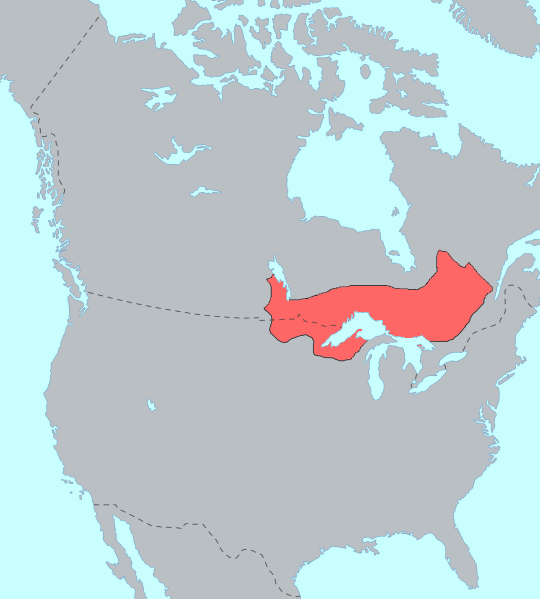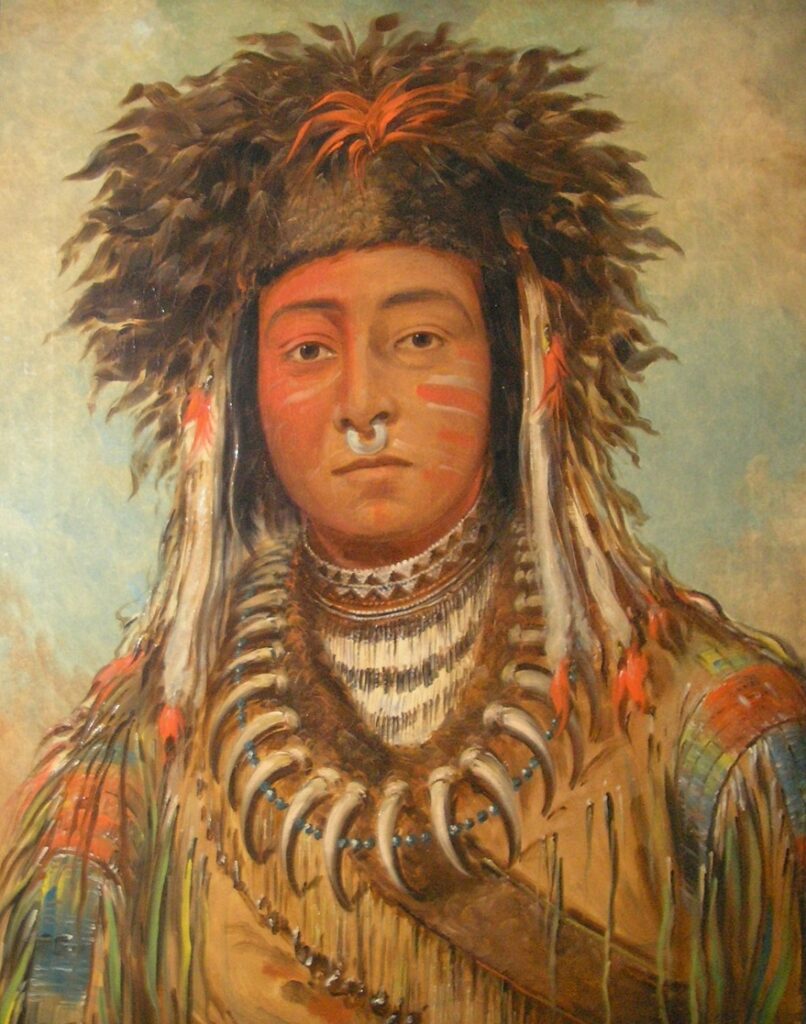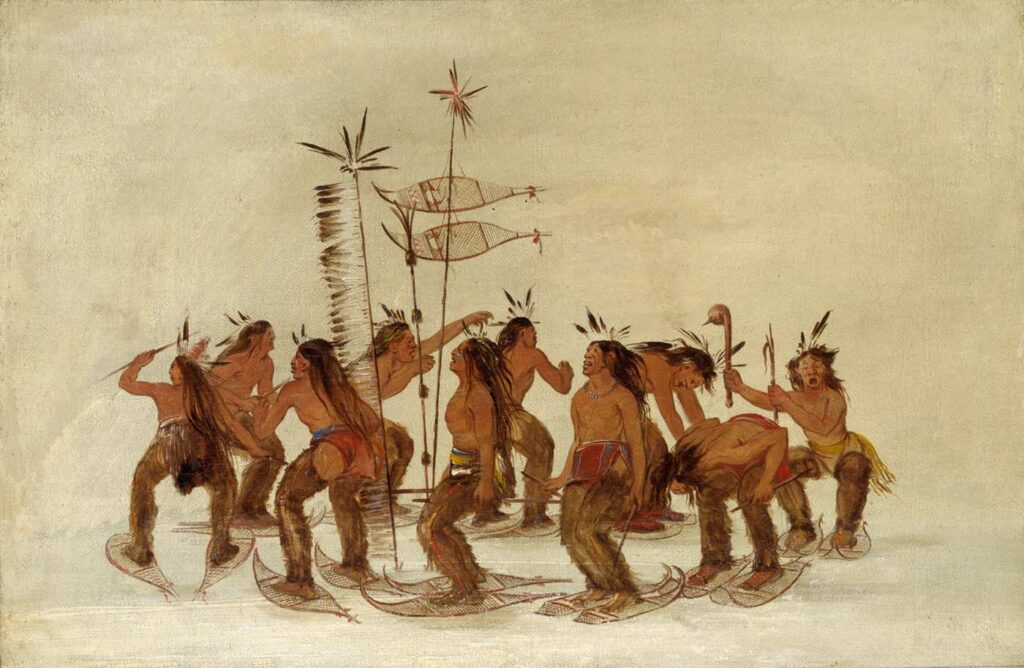The Chippewa people are a powerful northeastern native nation in North America with a rich and storied history as both diplomats and activists.
One of North America’s most powerful first nations was the Chippewa tribe. Also called the Ojibwe people, this nation spread across a large section of the northeastern part of the continent and held significant sway over both native and settler governments for quite some time.
Though they faced the same assimilation and obliteration efforts as their neighbors, the Ojibwe held tight to their religious beliefs and culture, carrying that passion into modern-day activism.
Here’s what you need to know about the Chippewa or Ojibwe people.
The Geographical and Political History of the Chippewa Tribe
The Chippewa are the original inhabitants of the area surrounding Lake Huron and Lake Superior, now Michigan, Wisconsin, and Minnesota.
They also settled along the Mississagi River and through southern Ontario, meaning that their traditional homeland covers the majority of the central northeast of North America, though their cultural influence has reached across the continent.
Their original name is the Anishinaabeg, or “true people.” The name Chippewa is an anglicization of this name used primarily in the United States; Canadian Anishinaabeg people now use the name Ojibwe, from their word for “puckered up.”

This is thought to be about the style of shoe the people wore, which was a moccasin with a puckered seam along the top of the toe.
The Chippewa people were part of a larger group of nations known as the Algonquian people, as they shared linguistic and cultural similarities. Other Algonquian tribes include the Miꞌkmaq, Shawnee, and Creee.
This group is part of a language family of first nations, along with the Ottawa and Potawatomi tribes, who came from the Straits of Mackinac.
Though they are largely considered similar thanks to shared ethnic and geographic roots, the languages used by each tribe are distinct and shouldn’t be confused for dialects of the same language.
The Chippewa first encountered settlers through early 1600s missionaries and the eventual settlement of the French in the area; their first recorded interaction was with Samuel de Champlain when he arrived at Lake Huron in 1615, and the connections made with his group through to the 1620s.
By the 1640s, the French had begun to refer to the Ojibwe people as the Saulteaux, due to their proximity to the St. Mary’s River, which was known for having sault or rapids. In the 1660s, the Ojibwe and the French had an active trading relationship, which eventually changed the Ojibwe’s hunting practices to make them more reliant on European goods.
Their active participation in the fur trade and willingness to barter for and use European weapons made them a powerhouse in the area by the end of the 18th century.

Their involvement in the Council of Three Fires – which also included the Potawatomi and Ottawa nations – led to less clash with the settlers and eventually to the Chippewa lending their assistance to the French during the Seven Years’ War, though they were defeated and lost a large portion of their territory to the British.
In an effort to reclaim it, the Chippewa allied with the British during the American Revolution and the War of 1812 but yet again found themselves on the losing side and lost the vast majority of their political power.
The federal governments of the United States and Canada continued to make agreements with native people throughout the 1800s that were swiftly overruled and ignored, forcing native people out of their home territory and into increasingly smaller reservations from which they could not support themselves alone.
Though there was mild improvement in the late 1900s – including a reaffirmation of two treaties that preserved for the Wisconsin Ojibwe people the right to hunt and fish on their own land – even now, in the 2000s, the Ojibwe people and their neighbors are still fighting to preserve and expand their culture against outside influences.
The Culture and Lifestyle of the Chippewa Tribe
Chippewa society was patrilineal, following the male line in families to establish lineage, which made children from French or English settlers slightly more othered than they might have been in other nations.
The nation was organized into bands (often named for various animals) that were largely sedentary, cultivating maize, rice, and other crops and hunting, fishing, or foraging for the rest of their food and supplies.
Power was passed through merit rather than bloodline, and so often, the band leaders were powerful hunters or warriors. Other respected positions included medical authorities and religious leaders, whose responsibilities sometimes overlapped.
Most Chippewa settlements were comprised of 20-50 people in a band. A few bands together formed villages that lived in wigwams lined with woven mats and birchbark, making them light and cool in the summer and easy to insulate with furs in the winter. However, winter usually meant the dispersal of various bands to hunt and forage over a wider range of land.
The culture was largely community-based; many responsibilities, from child-rearing to village maintenance, were handled communally.

The Chippewa were expert canoe makers, using birchbark to make strong, stable vessels that they used themselves and traded with others in the area. They were also copper miners and maple syrup makers – the first in the region.
Their religion was similar to many other native cultures’ beliefs in that it revolved around deep connections to the spirit and natural worlds under the larger Creator.
The Chippewa’s beliefs focused on the demigod hero Wenebojo, who taught their people how to raise maize, brought them the vast majority of their medical knowledge, and protected them from dangerous spirits that lived near the Lakes.
Chippewa religious beliefs were often deeply personal, rooted n a connection to a guardian spirit to whom one may give offerings in exchange for protection and guidance.
In terms of communal religious practices, shamans would work from Midewiwin or medicine lodges, carrying out rituals for identifying and communicating with spirits for the benefit of others, often to identify illnesses, dole treatments, or create charms with various effects.
Much of the Ojibwe nation’s knowledge was recorded using pictorial language that represented both their religious beliefs and working scientific and mathematical knowledge.
This writing would be recorded on birch bark scrolls or carved into rock walls. Much of the surviving writing from early Chippewa history is considered sacred by the tribe and so not widely shared with outside sources.
Other than writing, oral tradition was a large part of the Chippewa culture; there were some stories told only at certain times of the year to avoid malevolent spirits, and some told only during specific occasions.
Their tribe is also one of the originators of dreamcatchers, designed after spider webs to capture the bad dreams and disturbing spirits in the night to be released during the daytime. Ojibwe mothers often made these for their children. In modern times, dreamcatchers have also been largely appropriated by non-native society.
The Modern Chippewa Tribe
The Ojibwe or Chippewa people are a growing community in the modern world with more than 320,000 members, making them the second-largest native population in Canada and one of the largest in the United States.
The culture is still denominated into bands with unique flags, governments, and needs; many Ojibwe activists work to keep the nation’s culture and language alive through education and outreach efforts.
There have been a few famous Ojibwe celebrities in recent years.
Adam Beach of Smoke Signals and Windtalkers fame claims is a proud Ojibwe man, while Care Gee is an Ojibwe actress well known for her parts in Strange Empire and The Expanse. Finally, Louise Erdrich is a Chippewa author who writes on the history of her people and their conflicts with the United States Government, having earned herself multiple awards for her work on the subject.
Though there is no one central site to visit run by this nation, you can learn more about the Chippewa people by visiting this site or by visiting the Milwaukee Public Museum.
The Chippewa people may not have the geographical or political power that they once did, but they have not disappeared, nor will they ever disappear if modern native rights activists have anything to say about it.
Though their culture is deeply personal and sacred, and modern American and European cultures have widely disrespected it, the Chippewa people still graciously try to find ways to share their culture with those willing to listen and be respectful and do continue practicing it themselves.
Sources
https://blog.nativehope.org/history-and-culture-of-the-ojibwe-chippewa-tribe
https://www.saulttribe.com/history-a-culture
https://ohiohistorycentral.org/w/Chippewa_Indians
https://www.thoughtco.com/ojibwe-people-4797430
https://www.mnhs.org/fortsnelling/learn/native-americans/ojibwe-people
https://www.mpm.edu/content/wirp/ICW-151
https://project.geo.msu.edu/geogmich/ojibwe.html
https://edsitement.neh.gov/lesson-plans/anishinabeojibwechippewa-culture-indian-nation

